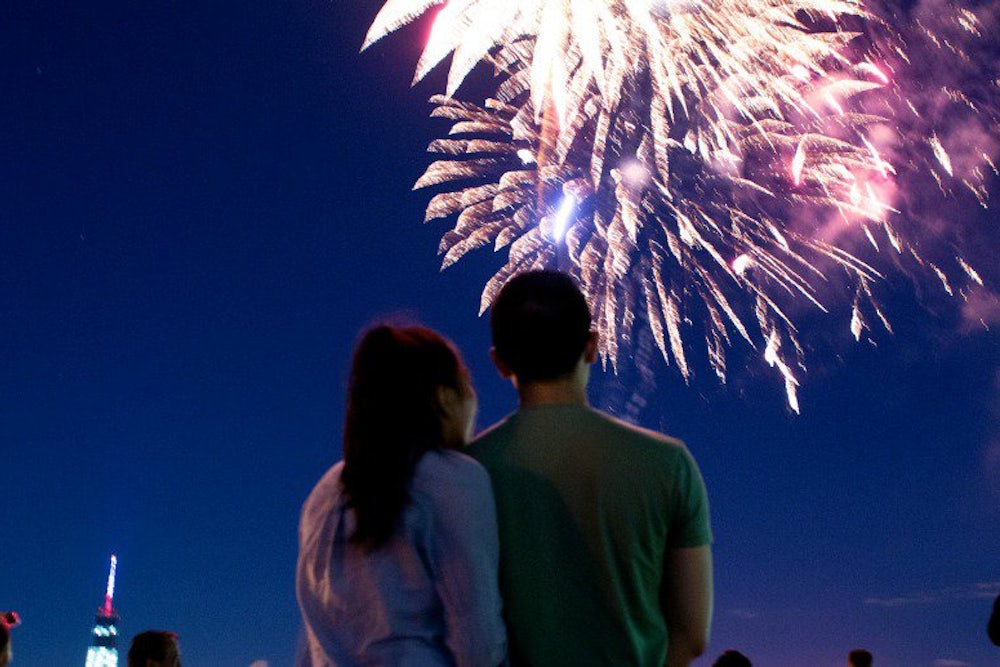Who owns the Fourth of July? That is the question underlying the gala being planned by friends of the President, who, in spite of their protest to the contrary, seem bent on wrapping it up and laying it at the White House door as an expression of support for Cambodia.
Washington needs another demonstration approximately the way it needs a new tug-of-war over our patriotic symbols. Already, the flag is being torn apart between those who burn it and those who use it to beat peace demonstrators over the head.
Couldn’t we leave the Fourth of July alone?
In my childhood in Roslindale, a very hard-working class suburb of Boston, Independence Day was the pleasantest, least demanding, most unifying holiday of the year.
For the other 364 days, we were more conscious of our parents’ nationality than our own. The Germans occupied the top of Metropolitan Hill, the Trish held the brow, and the Italians who were looked down on by the others, lived down in the valley.
There was one Jewish family in our neighborhood. The two daughters, bright and gentle girls, were formally expelled from our little club, which met weekly in the cellar of Elizabeth Kittora, whose father was a silent and forbidding Swiss watchmaker, was seven at the time, and it was my first taste of anti-Semitism, which later engulfed our little world.
Our letter-carrier, Mr. Green, was of the opinion, which he delivered with the mail - except at our house, because our dog. Zippy, hated people who carried things - that the Masons were robbing the Catholics of their place in the sun. It was a theory that took no account of the fact that all the city offices were in the grip of Irish politicians who rose and fell by favor of Cardinal O’Connell. Later, Mr. Green began to think the Jews were at the bottom of everything, and later still, guided by the Sunday broadcasts of Father Coughlin, he discovered the Red Menace and lived with it happily the rest of his life.
My father, who was a reader, was soft on the English, and did not share the general, fierce feelings of “Yankee” oppression. Resentment of British tyranny was, in a way, our one bond with the colonists, who had come so many centuries before us, and we learned to memorize “One if by land and two if by sea” and “By the rude bridge that arched the flood” at school.
Ecumenism was unthinkable in those days. In fact, only the more tolerant thought we would meet our Protestant neighbors in heaven, although it was generously conceded that Mr. Stone was a fine man. International marriages were the subject of heated discussion. The city hall clerk’s Irish daughter married the carpenter’s Italian son. The mothers had seen each other at the Perpetual Novena at the Sacred Heart Church, so they had something to talk about, after all.
The hairdresser was Armenian, a dark and somber woman who regaled her clients with tales of Turkish atrocities as she grimly pressed in the marcel waves. We knew no Turks, but we believed the worst about them.
But on the Fourth of July, we laid all our prejudices and divisions aside and we foregathered at Tupper’s Field to eat free ice cream and listen to Henry Osterlind read the Declaration of Independence and watch a parade of crepe paper costumed Indians, Pilgrims and the inevitable bloody-haired drummer boys.
Henry Osterlind was teacher’s pet in every grade of the Phineas Bates School, passed out the papers, erased the blackboard, was always the monitor. He was a curly haired, blue-eyed, preternaturally neat boy, heartily despised by his peer group, and I can remember Georgie Farrell firing his cap pistol into the ground in mute furious dissent and being glared at by his elders, who were enjoying the solemn, mysterious business of being Americans.
The only fear of the Fourth of July was that some boy would blow off his thumb with a four-inch salute, and there were many cautionary tales. Otherwise, the heat was off. You didn’t have to say anything, you didn’t have to do anything. You could forget where you came from and be content to be where you were, Americans at last, “endowed with certain unalienable rights,” all united for once and actually engaged in “the pursuit of happiness.” That’s what the Fourth of July is all about, or should be.
